Pan Am Series – Part XLI: Flying to the USSR – 1
19 July 2014 3 Comments
Москва
One of the major accomplishments of Pan American World Airways was its involvement in opening an airline route between the United States and the then Soviet Union (USSR). Of all the routes operated by Pan American, this would probably be the one route on which the airline actually operated as the “Chosen Instrument” or indeed as an instrument of American foreign policy.
The first flight from New York to Moscow was 15 July 1968. However it took years to finalize the arrangements that led to the inauguration of regular airline service between the two Cold War rivals. During this time, relations between the United States and the Soviet Union ranged from friendly to confrontational and included numerous events that were major news makers during that era.
The first instance of Pan American interest in entering into an airline service agreement occurred during the 1930s when Juan Trippe held discussions with the Russians. These discussions, however, were thwarted by politics. In 1945, the US Civil Aeronautics Board (CAB) awarded American Export (AOA) authority to serve Moscow by extension from Helsinki. Pan American inherited this authority from the AOA merger, but the authority lay dormant due to the Cold War.
About ten years later, during the Geneva Summit in 1955, US President Eisenhower proposed an exchange of airline service agreement with USSR. That year, the USSR concluded bilateral treaty with Finland, its first.
In 1956, the USSR concluded bilateral treaties with the Scandinavian countries for routes to Copenhagen with “beyond” (Fifth Freedom) rights to London, Brussels, Paris and Amsterdam. In addition, the Soviet Embassy in Washington, DC approached Juan Trippe and Pan American about opening a route between the US and the USSR. Trippe reported the contact to the U.S. State Department and the CAB and was authorized to continue discussions (in effect to revert to his old-style diplomacy), even though the opening of the route would be subject to a bilateral agreement between the USA and the USSR.
Based on this authority, Trippe went to Washington and met with Yevgeny F. Loginov, Minister of Civil Aviation and director of Aeroflot. Talks focused at the start on technical matters such as maintenance facilities, radio navigation, fuel storage and baggage handling. Negotiations were protracted. During this time, Trippe also visited Moscow.
By 1958, both nations had agreed to exchange airline service and the US-USSR cultural exchange agreement of 1958-59 contained promises that an air pact would be signed in due course. During that time, Khrushchev accused the U.S. ambassador to the USSR of “foot-dragging” in the negotiations.
In 1959 Trippe accompanied US Vice President Nixon to to Moscow and met with his Aeroflot counterpart. The Aeroflot chief later accompanied Khrushchev to the US and suggested the US attempt to persuade the Scandinavian countries to give the Soviets overflight (First Freedom) rights on its route to New York. This suggestion however, was in conflict with NATO policy of “confining” Soviet international aviation and insisting on strict reciprocity. These talks, however, were postponed to a more suitable time due to the U-2 incident, the abortive Paris summit meeting and the shooting down of a USAF RB-47.
U-2 aircraft (left); Khrushchev looking at wreckage (right)
Things eased when President Kennedy was sworn in as President and talks resumed. However, the FAA Administrator warned Secretary of State Dean Rusk that a standard bilateral agreement (modeled on Bermuda) should not be used with Russia, otherwise Pan American would be at a disadvantage compared with Aeroflot. Both countries, however, finally agreed on text, and Pan American and Aeroflot agreed on inter-carrier matters.
Unfortunately, however, the Soviets’ building of the Berlin Wall and the Cuban Missile Crisis intervened, causing President Kennedy to decline to sign the air agreement.
Building the Berlin Wall (1961)(left); President Kennedy at the Berlin Wall (1961)(right)
Cuban Missile Crisis (Credit: Bettmann/Corbis)
In 1963, President Kennedy advised Soviet Premier Gromyko that the US is ready to move forward on the airline agreement. There were still issues to be resolved, however, and it was not until December, 1963 that President Johnson, who succeeded the late President Kennedy, instructed Najeeb Halaby (then FAA head, later president of Pan American) to solve the remaining problems with the Soviets regarding the treaty. However, there was opposition to the treaty in the US, with the fear that the treaty will allow Soviet penetration into the Western hemisphere. In addition, the Vietnam War soured relations.
By 1966, USSR and Canada had concluded a bilateral air agreement giving Aeroflot authority to Montreal. President Johnson also suggested that the old agreement should be looked at again, and on 4 November 1966, the US-USSR agreement was signed in Washington.
The agreement differed from typical bilateral agreements where agreement on the commercial aspects of air services between the two countries, including capacity and tariffs, were made subject to a prior agreement between the designated airlines (Pan American and Aeroflot) which, in turn, was subject to prior governmental approval.
According to Marilyn Bender and Selig Altschul in Chosen Instrument, the agreement was a money loser. It entailed a once a week round-trip for each airline and the Russians prohibited Pan American from drumming up business in the USSR. “Although it may have been in the national interest for an American-flag carrier to fly to Moscow, there was no subsidy forthcoming from Washington.”
In 1967, another barrier was encountered when it was discovered that Soviet aircraft did not meet noise limitations, had insufficient avionics and flew too fast for US holding patterns. Rumors were that that the Soviets did not want to share technical data because of the similarity between their commercial aircraft and their bombers.
Later, the Soviet-Canadian agreement was amended to give Aeroflot beyond rights to New York. A new Soviet plane, the IL-62 began making test trips to New York and other U S airports.
On 15 July 15 1968, Aeroflot’s inaugural flight arrived at New York’s Kennedy Airport; on the same day a Pan Am 707 took off for Moscow on its inaugural flight to the Soviet Union.
Aeroflot IL-62 preparing for departure in Moscow (top)
Pan American 707 departing New York for Moscow (middle)
Pan American 707 arrival at Moscow (bottom)
All photos from http://www.miniaviamodel.ru
George Hambleton was sent by Juan Trippe to Moscow to develop good relations with Marshal Loginov, the Minister of Civil Aviation and director of Aeroflot. He wrote about this assignment in the book Pan American World Airways – Aviation History Through the Words of its People. Excerpts from his story are below:
“Juan Trippe had sent me to Moscow from Helsinki in the mid 1960’s to develop good relations with Marshal Loginov, Minister of Civil Aviation, in an effort to persuade Aeroflot to join Pan Am in developing an InterContinental Hotel in Russia. The contracts had been signed in Helsinki. Mr. Trippe told me not to tell anyone about the Russian hotel proposal – not even my own boss in Pan Am. Relations with the Ministry and Aeroflot developed favorably, but a hotel agreement was never concluded. The favorable relations, however, set the stage for eventual introduction of scheduled services between New York and Moscow.
“During the early negotiations, I remember, with some amusement, our US technical team telling Aeroflot that the FAA required both DME and transponders on all aircraft entering New York airspace. This was long before GPS. The Pan Am team said with these two instruments pilots could know their exact location. The answer from Aeroflot was, “Soviet pilots always know their exact location!” However, if one had looked closely at the belly antenna of the Russian IL-62, after service began, one would have seen the insignia, ‘RCA’ (Radio Corporation of America).
“In the Cold War decade of the 1960’s, after Sputnick, the Cuban missile confrontation, and the Kennedy assassination, life in Moscow was grim. The city was bleak, drab and grey. There was no lighting or advertising signs on the sides of buildings – no color printing – only some faded reds and blue. The terror of the years of Stalinist purges had diminished but fear was still pervasive – particularly among older people. The attitude of many was, ‘We have always been at war – with the Germans – before that with the French – the Swedes – and the Tartars. Our memories are all of sadness.’ * * *
“Into this world I walked as a relatively young man, with a young English wife, two young children, and a Labrador puppy. How to cope with this system, and have an efficient Pan Am operation off to a successful start was the question. Given Pan Am’s strict worldwide policy against bribes and corruption, it seemed almost impossible, until we remembered a clause in the bilateral air agreement. Aeroflot was permitted to distribute advertising material in the United States – and Pan Am was permitted to distribute advertising material in the Soviet Union.
“Here was our incredible secret weapon. There was nothing in Russia like the Pan Am calendar, with its large, beautiful color pictures of worldwide destinations. People who had no other color pictures would frame them to hang in their otherwise drab and crowded apartments. I was told that Pan Am calendars would sell for the equivalent of some twenty or thirty dollars on the black market. During communist days, the Soviet Poet and playwright Vladimir Mayakovsky wrote ‘Without a piece of paper you’re an insect – with a piece of paper you’re a man!’ We had a piece of paper that made it legal for us to distribute these valuable items – a box of a hundred calendars was a pretty handsome gift – It was advertising material.
“Eventually service began.
“On July 14, 1968 Richard Witkin wrote in the New York Times:
‘At Pan American World Airways’ second floor sales office in the Hotel Metropol, 15 sons and daughters of American Embassy officials spent much of the rainy Moscow Sunday putting 16 kopek’s worth of stamps on 22,000 envelopes marking the inaugural flight…. The letter will be flown to New York on the… Pan American flight, and delivered to stamp collectors and others with special interest in the start of the route.
‘The (Pan Am/Aeroflot inaugural) flights will culminate a diplomatic effort that had its fragile beginning in the first Soviet-American cultural exchange agreement in 1958. It also will be another in a series of recent signs that relations between the two countries are being selectively improved, despite strains imposed by the Vietnam War.’
* * *
“In the early 1960’s, Mr. Khrushchev had been saying the Soviet Union would soon “overtake and surpass” the United States. Speaking at a ceremony celebrating Pan Am/Aeroflot service in the late ‘60’s, Ambassador Llewellyn Thompson said there was one field in which he would welcome the Soviet Union overtaking and surpassing the United States – that was in the number of visitors from Russia to the United States overtaking the number of visitors from the United States to Russia.”
The September 1969 timetable (above) illustrates the Pan American Moscow service that was operated for ten years. In the next posting of the “Pan Am Series” will be a description of the operation during this period.
For additional information about Pan American World Airways:
To learn more about the history of this pioneering airline, click on the title below for preview of
Pan American World Airways – Images of a Great Airline Second Edition.
This book is available on eBay .
Another excellent book is Pan Am – Personal Tributes to a Global Aviation Pioneer, which was published to commemorate the 90th Anniversary of Pan Am’s founding. It contains more than 80 stories written by former Pan Am employees and international media friends who had personal experience with many of Pan Am’s key events during its history. It is the perfect companion to Pan American World Airways – Images of a Great Airline Second Edition and can be purchased on Amazon.
Preview Pan American World Airways – Aviation History Through the Words of its People, which is available on Amazon.
For further information about the history of Pan American World Airways, visit: Pan Am Historical Foundation

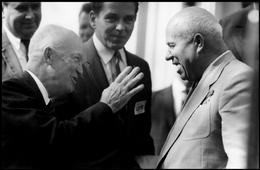
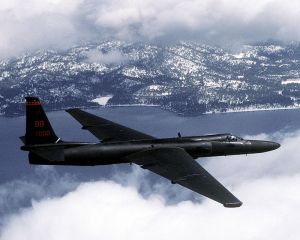
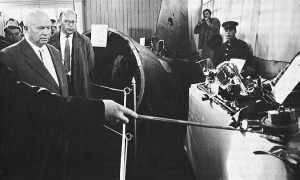

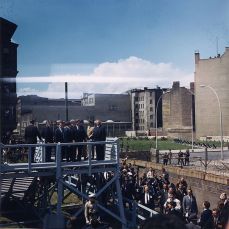
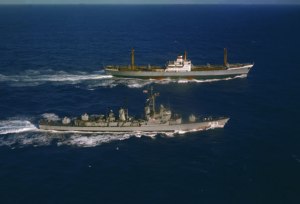
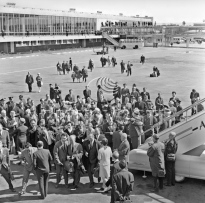
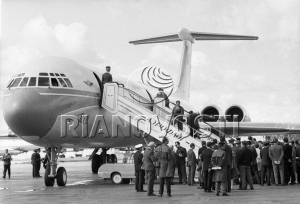

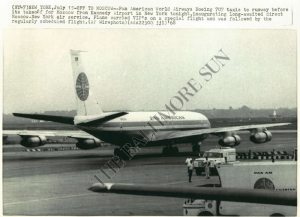
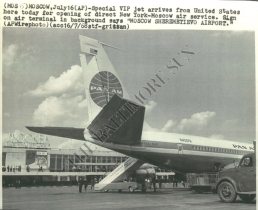
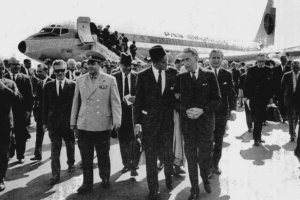
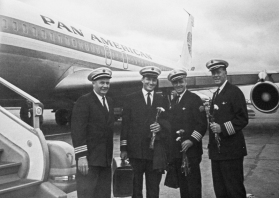
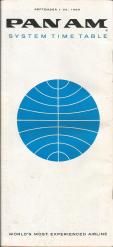
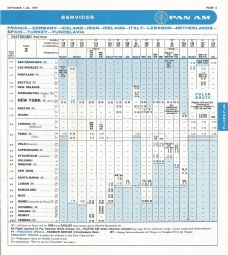
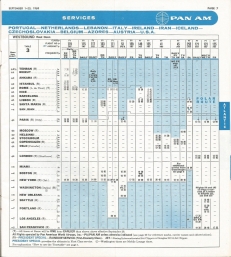
JPB. I thot overfly rights were 3rd Freedom?
Bob, thanks for the email. Overfly is actually the First Freedom, as defined in the ICAO website:
“First Freedom of the Air – the right or privilege, in respect of scheduled international air services, granted by one State to another State or States to fly across its territory without landing (also known as a First Freedom Right)”.
Third Freedom involves traffic carried between the home country and another by the home country’s carrier. Again from the ICAO website:
“Third Freedom of The Air – the right or privilege, in respect of scheduled international air services, granted by one State to another State to put down, in the territory of the first State, traffic coming from the home State of the carrier (also known as a Third Freedom Right)”.
Thanks for your question.
Brgds, Jamie Baldwin
Pingback: Come Fly With Us – Behind the Iron Curtain